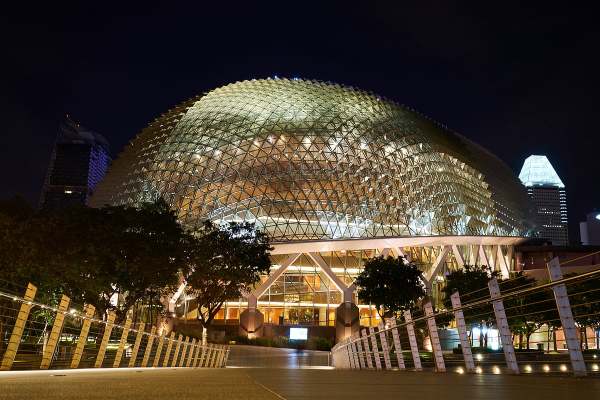
Singapore is often defined by its skyline — all sleek towers, shining glass, and architectural ambition. But just beyond that modern gloss lies something even more remarkable: a city rooted in nature, where lush green spaces are as carefully cultivated as skyscrapers.
I travelled to Singapore this Eid break with my family, and experienced firsthand why it’s known as a city in a garden — a place where nature and culture coexist, where history is quietly preserved, and where even the most ordinary walk can feel like a journey through a living museum. And it’s wonderfully easy to explore with children of all ages — a rare destination where discovery feels effortless, and every detail seems thoughtfully designed to delight. Here are five things to keep in mind while visiting:
Nature isn’t a luxury — it’s the landscape
Singapore Botanic Gardens
Singapore’s green spaces are more than just scenic—they’re central to its identity. From the moment we stepped into the Singapore Botanic Gardens, a UNESCO World Heritage Site, we were immersed in a world of giant palms, shaded trails, and elegant swans drifting on still lakes. The atmosphere is calming, yet rich with purpose. Here, families picnic under centuries-old trees while researchers study orchids that bloom with near-mystical precision.
Then there’s Gardens by the Bay, where nature and innovation dance together. The towering Supertrees don’t just dazzle — they support real plant ecosystems and light up with solar-powered shows each night. In the Cloud Forest, we walked through misty air and past the world’s tallest indoor waterfall, surrounded by ferns and rare mountain flowers. It felt otherworldly, yet somehow deeply grounding.
Urban icons with a sense of place
Even Singapore’s most photographed landmarks speak to the city’s signature blend of spectacle and substance. The Merlion, gazing out over Marina Bay, is more than a symbol — it’s a nod to the city’s origins as a fishing village, reimagined for the future.
Just across the water, Marina Bay Sands rises like a sculptural skyline. It’s hard to miss — and hard not to be impressed. With its rooftop infinity pool, lush promenade, and the striking ArtScience Museum at its base, it’s a destination in itself, merging entertainment, architecture, and green urban space.
Families, especially those travelling with children, often make time for Sentosa Island — a short cable car ride from the mainland. The island offers beaches, aquariums, and amusement parks, but still fits within Singapore’s broader rhythm: efficient, clean, and seamlessly connected to the city. Even at play, Singapore holds its balance.
Heritage is woven into the everyday
Singapore is not only futuristic — it’s profoundly respectful of its past. A morning walk through Fort Canning Park revealed traces of the island’s layered history: from 14th-century Malay kings to British colonials, to the Second World War bunkers that remain intact. Today, families and joggers move peacefully through what was once a strategic military post — a quiet reminder that history doesn’t have to be loud to be felt.
The city’s cultural institutions reflect this same depth. At the National Museum of Singapore, we followed the country’s journey from colony to global hub through immersive storytelling. The Asian Civilisations Museum opened up the broader regional context, highlighting centuries of trade, migration, and shared influences across Asia. The Peranakan Museum offered a closer look at the unique hybrid culture born from Chinese and Malay communities — a world of vibrant textiles, porcelain, and personal narratives.
At the National Gallery Singapore, housed in beautifully restored colonial buildings, Southeast Asian art movements unfold across sunlit halls. There’s a quiet power in how the city embraces both its traditions and its creative future — not side by side, but seamlessly blended.
This careful integration of heritage, identity, and design becomes even more apparent at the Singapore City Gallery. Located in the heart of the city, the gallery offers a comprehensive view of how Singapore has been intentionally shaped. Through detailed architectural models and interactive exhibits, it explains how a tiny island nation — limited in space and resources — manages housing, transport, green spaces, and heritage conservation through long-term planning. It’s an eye-opening prelude to the everyday experience of being in Singapore.
Designed for discovery
Just as the Singapore City Gallery illustrates, this is a city that functions by design — and the results are tangible. Public transport is fast, clean, and intuitive. Pathways are stroller-friendly, signage is clear, and greenery is built into the urban fabric. Vertical gardens soften highways. Rooftop farms reduce urban heat. Public spaces are inclusive and easy to navigate.
You can move from a museum to a waterfront promenade to a rainforest dome, all within a compact and well-connected radius. Despite its density, Singapore feels spacious — a product of meticulous urban planning and a clear vision of what makes a city livable.
That same precision carries into its food culture.
To understand Singapore, one must taste it.
Few cities in the world take food as seriously — or as joyfully — as Singapore does. Here, cuisine is not just nourishment; it’s identity, history, and conversation. From bustling hawker centres to sleek, Michelin-starred establishments, the city serves up an extraordinary spectrum of flavours rooted in its multicultural heritage.
Why Singapore feels different
Singapore is a masterclass in balance. It’s modern without being cold. Lush without being wild. Historic without being stuck in the past. And above all, it’s deeply intentional — a city that’s been carefully shaped not just to impress, but to nurture.
For families, solo travelers, or curious minds, it’s a place that invites you to look a little closer. To walk a little slower. To discover what happens when a city allows nature, culture, and community to grow together.
Because in Singapore, you’re not just visiting a destination — you’re stepping into a living, breathing garden.